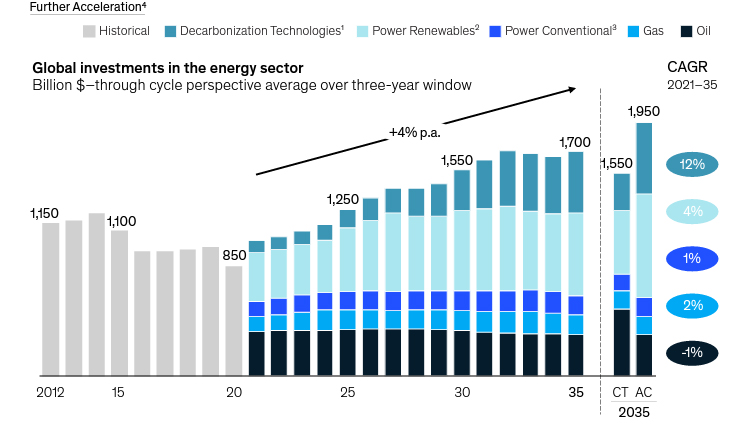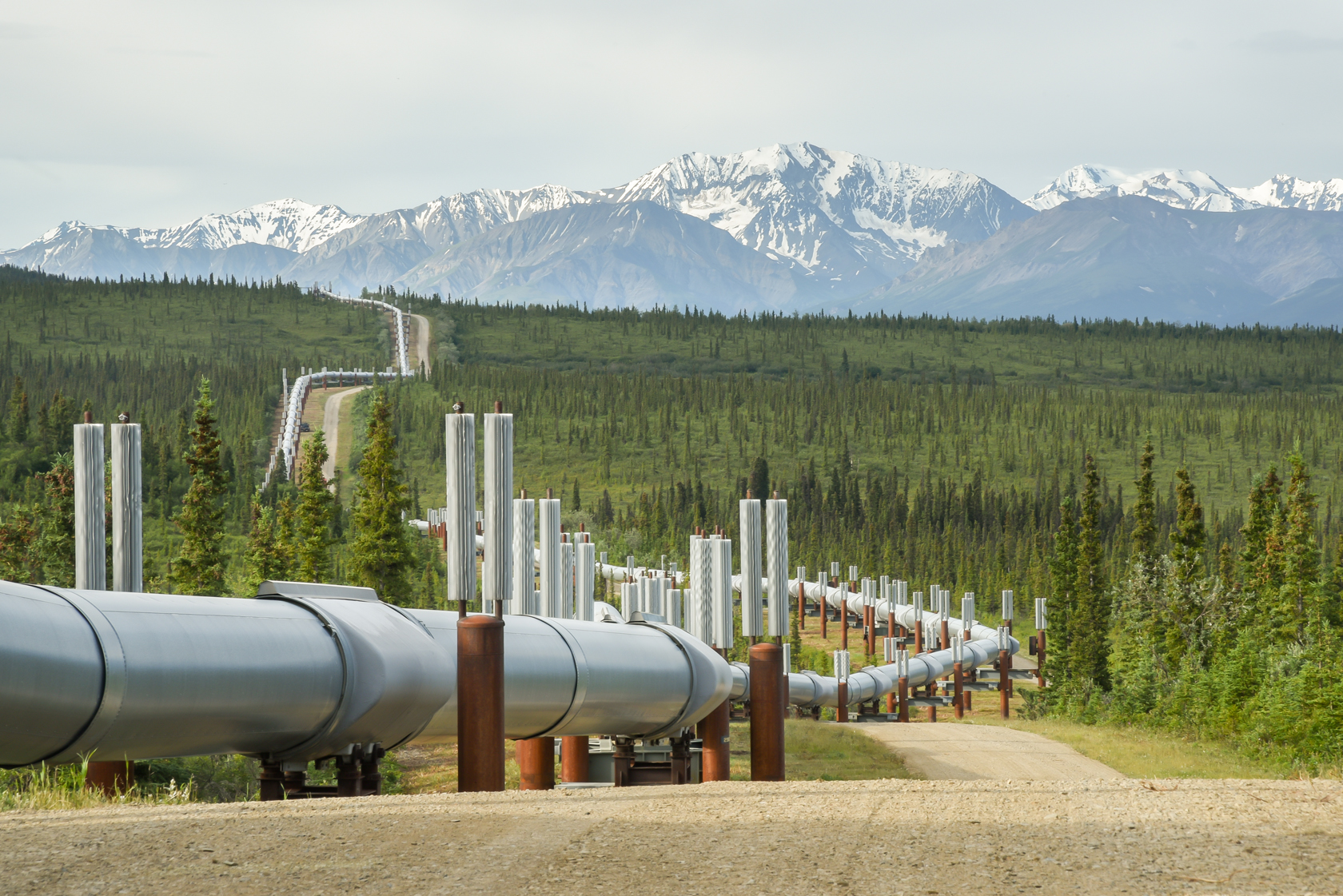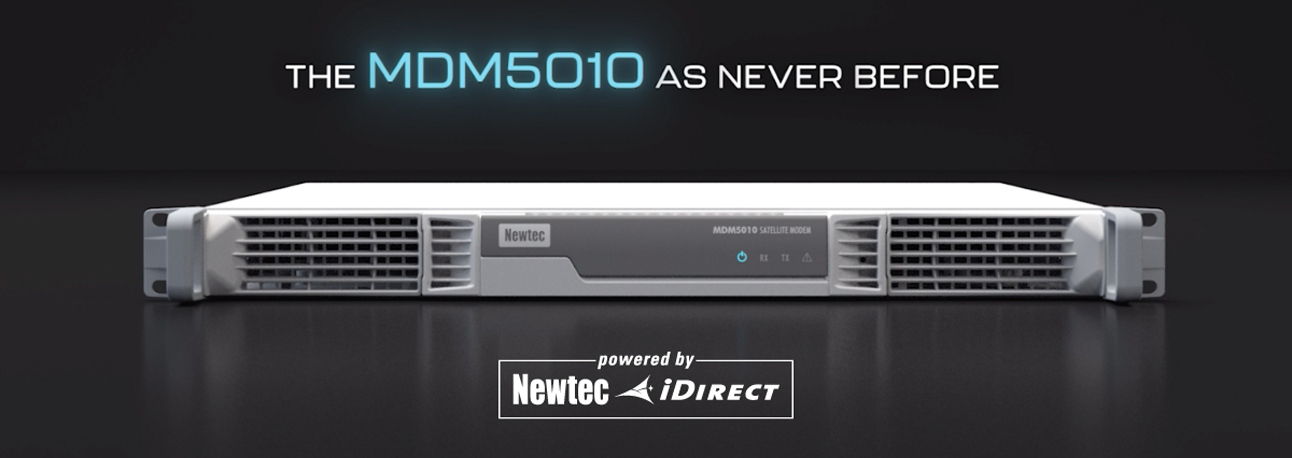The last few years have been turbulent ones for the oil and gas industries. First, tumbling prices, initially due to a 30% decrease in demand as the pandemic effectively grounded airlines and severely curtailed other public transport and private vehicle usage. This was rapidly followed by a price war, as Saudi Arabia stepped up output in a bid to become the dominant supplier. At the same time, the industry, like many others was suffering a shortage of personnel due to the pandemic. A serious issue for an industry that operates heavy machinery in remote locations.

Most of the industry is facing a sudden increase in demand and the largest rise in oil prices since 1973, as the world, and Europe in particular, struggles to find alternative supply sources to Russian oil and gas, as a result of the war in Ukraine. This increased demand is pushing companies to both increase output and expand drilling locations. Many of the new locations now being considered are more remote and in more inaccessible locations than existing wells.
These issues have occurred against the backdrop of the ongoing concern about climate change and the accompanying drive to reduce pollution
and increase the usage of renewable energy. However, in spite of those good intentions, it must not be assumed that the fossil fuel industry is one in decline. Far from it. The latest report from Ren21, the global renewable energy community, comprised of players from science, governments, NGOs and industry, indicated that investment in renewable energy has stagnated, and governments continue to provide subsidies to the fossil fuel industry. Between 2018 and 2020, governments spent US$18 Trillion-- which equates to 7% of 2020 global GDP - subsidizing fossil fuel.
However, it would seem that both renewables and fossil fuels will benefit from the energy crisis caused by the war in Ukraine. In response to this, the European Union (EU), as well as national and local governments have updated clean energy targets and are pushing through multiple measures to accelerate the energy transition. However, at the same time most countries have also authorized new subsidies on fossil fuels.
Subsidies notwithstanding, the oil and gas industry continues to look for ways to increase efficiencies and reduce its environmental impact.
The Internet of Things (IoT)
The Internet of Things (IoT) is one of the key ways to increase energy efficiency. Networks of sensors, robotics, cameras and control systems collect a wealth of data, that when processed correctly, will supply information that amongst other things will: increase machine utilization, enable automation and remote operation of machinery, provide remote monitoring and diagnostic services, schedule preventative maintenance, improve worker health and safety and reduce onsite visits.
Long before the term IoT had been coined, the oil and gas industry was using Supervisory Control and Data Acquisition (SCADA) to monitor the health of pipelines. Sensors were, and still are, fitted at intervals on a pipeline to monitor flow. The data was transmitted, usually via satellite, to a control center, so that corrective action could be taken if any problems were identified. In other words, SCADA is IoT by another name, making the oil and gas industry one of the early adopters. Since many oil and gas rigs are located off-shore or in remote locations it is hardly surprising that the industry was also an early adopter of satellite communication in the form of very small aperture terminals (VSATs), using them to connect and protect the workforce.
Now the industry is looking to the IoT to further help deliver efficiencies and cost savings. The IoT today is far more sophisticated than basic pipeline monitoring. This is still very important and still happens. But now, instead of someone having to fly out to a remote pipeline if a problem occurs, there might also be a remote-controlled robot on the pipeline, able to make minor repairs. On the drilling platform there will be a myriad of sensors and cameras, there may also be autonomous or remote-controlled equipment and vehicles. Transformation plants, in common with the drilling platform, will also have numerous sensors and many processes may be automated. The IoT can also help streamline the exploration process, by facilitating unmanned exploration rigs and more efficient analysis of samples.
There is no single reason that drives a company to adopt IoT – drivers, like benefits are multiple. In research conducted in the oil and gas industry for Inmarsat, by Vanson Bourne in 2021, cost efficiencies and the improvement environmental sustainability were mentioned by over 50% of companies interviewed, but not far behind were: increased staff productivity, reduced downtime and greater supply chain insight, all of which were mentioned by over 45% of companies interviewed.
Maybe because of the early experience with SCADA, the industry is one of the leaders in embracing the IoT. In the research for Inmarsat, 74% of the oil and gas companies interviewed, said they had fully deployed at least one IoT project. Unsurprisingly, given their early experience, pipeline monitoring was the most common use case, with 62% of respondents saying that this was either fully deployed or currently being trialed. This was closely followed by asset and vehicular tracking and route optimization with 58%. and well-head monitoring with 56%. People tracking for health and safety represents the largest immediate growth application.
However, no matter how sophisticated the sensors are, if the data cannot be reliably transmitted and accessed, the full benefits will never be realized. In other words, communication is the key to realizing the full benefits of the IoT.
While the information collected from some individual sensors, such as those carrying out remote monitoring of pipelines, may only require low data rate transmission, from other devices, cameras for example the requirement is for much higher data rates, and for some, such as remote operation of machinery, both high data rates and low-latency are essential. One thing is clear, as more IoT sensors are deployed, the need for both bandwidth and processing power will increase.
The Role of Satellite
The importance of good connectivity was emphasized by respondents in the Vanson and Bourne research, with 80% of respondents stating that “satellite connectivity provides crucial support to their organization’s IoT communications networks.” Emphasizing just how imperative good connectivity is, 82% of those that had implemented IoT projects, mentioned that these had become “much more successful” after solving initial connectivity issues. Similarly, “lack of consistent and reliable connectivity” was mentioned by over 30% of respondents as a significant barrier encountered when deploying IoT projects.
 |
| Global investments in the energy sector will continue to grow at CAGR of 4%through 2035 according to McKinsey & Co. |
The importance of good connectivity was also emphasized by McKinsey in a study carried out in 2020. The study estimated that “advanced connectivity to optimize drilling and production throughput and improve maintenance and field operations could add up to US$250 Billion of value to the industry’s upstream operations by 2030 .” It was estimated that between US$160-180 Billion could be realized with the existing infrastructure and an additional US$70 Billion could be unlocked with by non-geostationary satellites (NGSO) and 5G. Furthermore, McKinsey estimated that “offshore operators can reduce costs, including operational and capital expenditures by 20-25% per barrel by relying on connectivity to deploy digital tools and analytics.”
Although some modern remote and offshore rigs are connected by fiber, many are not. The research conducted for Inmarsat, revealed that 56% of installations relied on satellite for backhaul and even those that don’t use satellite as a primary means of communication, often have a backup satellite connection.
Research from NSR bears out the importance of satellite for the oil and gas industry, forecasting nearly US$ 900 Million in upstream retail revenues by 2028. The number of in-service VSATs used by the industry is expected to increase to 132,677 by 2028, showing a CAGR of 5.5% from the 77,866 in service in 2018.
Although connectivity priorities vary somewhat by stage in the production cycle, overall there are some common requirements for the network:
• It must be secure. As a strategic industry, it is particularly vulnerable to cyber-attacks, which can have devastating effects. This was made abundantly clear in 2021 when a ransomware attack on the Colonial Pipeline, disrupted gas supplies to a large part of the eastern United States. The operators of the pipeline were forced to shut down 5,500 miles of the pipeline, which carried around 45% of the east coast’s fuel supply.
Also, given that there can be several companies on a drilling rig, the common network must be equally secure for each of them.
It must be reliable. Outages, even momentary “blips” aren’t tolerable when operating remote equipment. Not only do they equate to lost revenue, they may also impinge on safety.
It must be flexible. It must be able to handle significant variations in data throughput. In the early stages of exploration data requirements may be pretty low, compared to a those of a fully operational well. Equally, as has been clearly demonstrated in the last few years, the industry goes through cycles, at the bottom of a cycle when output is lower so too are bandwidth requirements.
It must be efficient. It must be able to handle everything from the low data rate requirements of asset tracking, to the high data rate requirements of streaming video for crew welfare and it must be able to handle these simultaneously, and effectively prioritize between the different applications. Traffic to operate a remote drill, needs priority over crew welfare applications for example. When an anomaly is detected by a sensor, it may be a requirement to switch to HD video for more information, the network must be able to do this seamlessly in a timely manner. It must prioritize in such a way that congestion is avoided.
As IoT increases in ubiquity, the number of sensors deployed continues to increase. As that happens so too does the volume of data and the amount of processing needed. Access to a public or private cloud to handle this processing and facilitate the use of advanced analytics is therefore another requirement.
It must be cost-effective. Bandwidth is becoming cheaper, but nevertheless it still represents a significant investment. It therefore must be able to accommodate a spectrum of applications, which leads to a greater return-on-investment (RoI).
While near real-time communication is not essential for all applications, latency is becoming increasingly important, as the IoT is used more and more for the operation of autonomous and remote-control vehicles and machinery. Therefore, connection to non-geostationary orbit satellites (NGSO) with their fiber like connection speed, is becoming as important, if not more important than connection to a traditional geostationary (GEO) satellite.
One exciting new application for the industry which is being made possible by the IoT and low latency communications is the creation of digital twins. A digital twin is a virtual twin of a real drilling platform. It can be used to simulate an accident and let artificial intelligence (AI) and machine learning (ML) examine the situation and develop the best solution. An engineer using google glasses gets to “see” the accident and learns how to best to deal with it. This makes repair work easier and faster when similar accidents occur.
According to McKinsey, using advanced analytics can help operators cut idle time in half during the drilling of a well whilst also reducing emissions by nearly 10%. This was confirmed by a large oil and gas company who sated that drilling speeds were 50% higher when drilling in “the most challenging section of a high pressure well in the North Sea, because of the advanced analytics that used historical data to suggest optimal drilling parameters.” So, connection to a cloud-based solution where the processing power facilitates the use of advanced analytics is essential.
Being able to fully deploy automation for exploration and drilling, McKinsey states would reduce the number of employees needed on a rig, to 10-15 as opposed to the 100 that normally work there. As well as the obvious cost implications of reducing onsite staff, this would have a significant impact on safety. Working on an oil rig is a dangerous occupation. Workers tend to work long hours, with or around heavy machinery, in arduous conditions. In 2017 (the last year for which statistics are available) the CDC logged 69 fatalities in the oil and gas extraction industry in the US alone.
Renewable Energy
In efforts to curtail rising temperatures as a result of climate change, efforts are underway around the world to increase usage of renewable or “green” energy sources. Just last year, Germany announced a goal to source 100% of the country’s energy from renewable sources by 2035. Whilst this may be one of the most ambitious plans announced to date, virtually every country in the world, is trying to reduce dependence on fossil fuels.
“green” energy sources. Just last year, Germany announced a goal to source 100% of the country’s energy from renewable sources by 2035. Whilst this may be one of the most ambitious plans announced to date, virtually every country in the world, is trying to reduce dependence on fossil fuels.
Solar and wind are the two main sources of renewable energy in use. In common with oil and gas drilling platforms, solar and wind farms tend to be located in remote areas or offshore. IoT and good connectivity play a major role in the economic viability of green energy. The remoteness of wind and solar farms means that without IoT, inspection, maintenance and repair of facilities would be a time-consuming task.
The applications and advantages of IoT for renewables are similar to those for the oil and gas industry. Sensors provide real-time monitoring of solar panels and wind turbines for things such as humidity, vibration, motion, temperature, pressure, and corrosion. This data is transmitted to a central source for aggregation and processing, invariably by artificial intelligence (AI). Real-time data is combined with historical data to assess how well equipment is functioning and whether maintenance is required now or in the immediate future, so forming the basis for better decision making and predictive analytics for scheduling maintenance. This information can also be combined with weather and solar data to anticipate output, and tilt individual solar panels for optimum efficiency.
One of the issues with renewable energy sources is that they do not produce energy at a constant rate, output is heavily weather dependent. The traditional electricity grid was built to accommodate a steady one-way energy source. “Smart grids” are needed to handle green energy, and these would not be possible without sensors and remote-controlled switches. A smart grid supports switching between different energy sources as needed. So, if a wind or solar farm, is unable to generate electricity due to unfavorable weather conditions, the smart grid will switch the energy source, either to another renewable source or a traditional power plant. This would not be possible without the IoT and of course the much-needed connectivity to enable the collection of data and remote operation of equipment.
ST Engineering iDirect
Whilst there are a few companies providing the connectivity infrastructure needed for the energy sector, one company, ST Engineering iDirect, with over 70% of the market really stands out.
Its Mx-DMA MRC return technology, which received the prestigious “Teleport Technology of the Year” award from the World Teleport Association this year, is ideally suited to the energy industry. It is the industry’s most powerful and flexible return technology. It unites Mx-DMA HRC efficiency with MF-TDMA scalability, into a single return technology. It extends the availability of Mx-DMA to very large networks, up to 5,000 active terminals per network whilst lowering the total cost of ownership (TCO). It also incorporates the scalability of MF-TDMA with the efficiency of single channel per carrier (SCPC) into a single return technology. Customers can incorporate a myriad of use cases in a single return link, without making any tradeoffs between speed, efficiency, scale and cost.
The network is secure, as data can be directly communicated to the remote terminal unit (RTU) using a single satellite hop. The communication end-points are authenticated which provides even greater security. Encryption is fully integrated and can be combined with traffic acceleration and compression, so providing real-time network behavior comparable to terrestrial delivery networks.
Mx-DMA MRC is the ultimate in efficiency. It adjusts the frequency plan, symbol rate modulation, coding and power in real-time for every terminal in the network based on return traffic demand, QoS settings and link conditions. It supports the delivery of different traffic profiles using a shared return capacity. So, a terminal with a steady traffic demand, will be assigned its own carrier, meaning that it will operate in an SCPC like mode, but it will also be sharing capacity with highly overbooked terminals carrying bursty traffic. This flexibility also means that, for example, if a sensor which was only using a low data rate to transmit information, reports an anomaly that necessitates switching the camera on, data from the camera will be uploaded at SCPC like speeds. This highly efficient use of bandwidth that facilitates sharing between multiple different applications, leads to a greater return on investment (RoI) and lowering of the total cost of ownership (TCO).
The Dialog hub from ST Engineering iDirect is the ultimate in reliability. It provides carrier grade availability of 99.99%. It achieves this by providing redundancy on every layer: user, control and management as well as on equipment. It has redundant RF signal and main supply inputs. This redundancy is conceived as two fully redundant chains, so in the event of a failure everything is automatically switched over to the other chain.
The Dialog hub is modular and scalable, so providing ample flexibility. Additional modules can be added as the network grows and/or additional applications are added.
ST Engineering iDirect have a range of modems suitable for use by the energy industry. For high bandwidth-intensive services and high speed there is the MDM5010, the industry’s fastest satellite modem capable of handling traffic up to 1.2Gbps. The MDM5010 supports both GEO and NGSO orbits, making it ideal for latency sensitive applications. It also supports any frequency (Ku, Ka, C etc.). Dual Tx/Rx ports enable operation on any satellite constellation, with make-before-break handover.
The MDM5010 can also operate in standalone SCPC mode at speeds of up to 1.6Gbps.
For lower data rates there is the MDM2510, a compact, low power consumption modem supporting total throughput rates up to 150Mbps. In common with the MDM3315 it offers DVB-S2 and DVB-S2X on the outbound, supporting DVB-S2X MODCODS up to 64APSK. On the return link it supports Mx-DMA at up to 20 Msps.
For medium date rate users there is the MDM3315. This is available as both a standalone unit and a rack mounted board. It offers throughput rates of 150/70 Mbps and supports a wide range of fixed IP and mobility and multicast services. DVB-S2 and DVB-S2X are available on the outbound. It supports DVB-S2X MODCODS up to 64APSK. The modem operates in multiple personalities across the platform of your choice. It can operate in Dialog, Velocity® and soon Evolution® as well. On the return link it supports ATDMA up to 7.5 Msps, SCPC up to 64 Msps and Mx-DMA MRC up to 25 Msps. 256-bit AES encryption is an optional addition.
Evolution is an IP-based satellite communications system engineered to deliver the highest quality broadband connectivity wherever and whenever it’s needed. It’s a platform that is open, efficient and easily scalable, lowering the total cost of ownership. This positions service providers for long-term growth and success with the ability to access a wide range of markets, manage operational and capital costs effectively and create unique value for customers. Evolution software delivers the latest features and provides the most advanced IP routing capabilities, security and QoS prioritization with unmatched flexibility. It also provides Layer 2 over Satellite (L2oS), which greatly expands flexibility for the operator. L2oS enables a satellite network to behave like a regular terrestrial access network. Customers have the ability to configure their own networks, without impacting the underlying satellite network infrastructure.
Evolution supports a wide range of data speeds – from narrowband to high throughput rates. Its line of DVB-S2/DVB-S2X iQ modems feature multiple form factors, including desktops, rackmounts and modem boards. It uses a software-defined architecture for maximum flexibility and expansion. More inbound throughput capabilities can be added by software upgrades, so avoiding the expense of site visits. Its high Msps rate (15 Msps) supports high return throughput capabilities on the inbound. The series also supports higher power BUCs and OpenAMIP mobility.
Not only does ST Engineering iDirect have over 70% of the market, it is also the leading company in what has been coined ‘New Ground’, a movement that serves to highlight the latest innovations on the ground and how they must mirror those in New Space. ST Engineering iDirect’s vision is that its New Ground capabilities will provide fully digitized and virtualized infrastructures, expanding seamless interoperability between satellite and terrestrial networks, providing automation, virtualization and orchestration, based on open standards to enable connectivity across multiple networks. ST Engineering iDirect has taken on the roles of innovation enabler, technology partner and thought leader. Its New Ground capabilities will provide access to all satellite orbits, and enable cloud connectivity to access performance, analytics and monitoring information.
This leadership position, not only in thought, but also in developing products and services to deliver this innovation means that partnering with ST Engineering iDirect futureproofs your communication needs. The future will be seamless, a user won’t know whether they are using satellite, cellular or fiber. The future will be multi-orbit, multi-access and multi-service.
With an over 70% share of the energy market, ST Engineering iDirect has a heritage in this diverse sector. This knowledge and experience has enabled the company to develop a wide portfolio of solutions tailored specifically for an industry that exhibits a range of different requirements. From mission critical connectivity where downtime cannot be tolerated, to low bandwidth IoT needs and crew welfare solutions, ST Engineering iDirect remains at the forefront. As the sector moves into the future, and connectivity evolves towards a hybrid approach where seamless switching between satellite, cellular and fiber as well as multi-orbit will be the norm, ST Engineering iDirect offers a future proof portfolio and is constantly innovating, ready to deliver the cutting-edge solutions that will meet the energy market’s growing requirements.
Related Article:
 Read the full MarketBrief report on the Energy Market sponsored by ST Engineering iDirect
Read the full MarketBrief report on the Energy Market sponsored by ST Engineering iDirect
--------------------------------------------
 Elisabeth Tweedie has over 20 years experience at the cutting edge of new communications entertainment technologies. She is the founder and President of Definitive Direction (www.definitivedirection.com), a consultancy that focuses on researching and evaluating the long-term potential for new ventures, initiating their development, and identifying and developing appropriate alliances. During her 10 years at Hughes Electronics, she worked on every acquisition and new business that the company considered during her time there. She can be reached at etweedie@definitivedirection.com
Elisabeth Tweedie has over 20 years experience at the cutting edge of new communications entertainment technologies. She is the founder and President of Definitive Direction (www.definitivedirection.com), a consultancy that focuses on researching and evaluating the long-term potential for new ventures, initiating their development, and identifying and developing appropriate alliances. During her 10 years at Hughes Electronics, she worked on every acquisition and new business that the company considered during her time there. She can be reached at etweedie@definitivedirection.com






